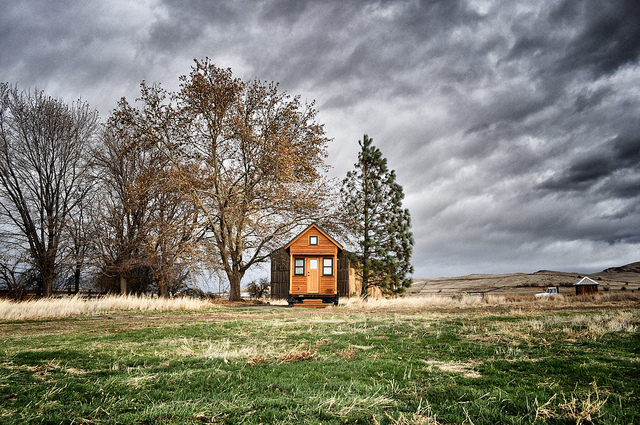Many people downsize when they move to a retirement home. Bette Presley, 72, took that idea to an extreme last year when she moved into her tiny house – a 166-square-foot cabin in the small coastal town of Arroyo Grande, California.
Presley’s home measures just eight by twenty-four feet. It has a built-in platform bed, built-in shelves, space for a narrow table and a loft that accommodates a queen-sized mattress for guests. Her tiny house’s kitchenette is outfitted with a built-in stove and oven, plus a sink and small refrigerator; in the bathroom are a tiny sink, a toilet and a shower. Presley heats and cools her home via a unit on the ceiling.
“We are consumers. We buy too much. We don’t need all of our belongings,” Presley told sanluisobispo.com. “I just experienced the clutter, to live in excess, and I didn’t find it particularly satisfying.”
Presley is part of the Tiny House movement, whose growing popularity reflects a desire among some Americans to pare down, consume less and enjoy a simpler, more customized home and lifestyle. While the houses are small – any home of less than 1,000 square feet is officially “tiny,” but most range between 100 and 400 – the trend is growing fast; as of last month, there’s even a tiny house TV show: Tiny House Builders premiered on HGTV on December 14.
The Tiny House Movement’s growth is largely among the young and child-free, but it’s gaining momentum among seniors, too; some 40 percent of tiny house owners are over age 50. After all, what better time to downsize, personalize, simplify and save – either alone or by buying a plot with friends and forming a tiny house community? A finished build-it-yourself house averages around $23,000, and plans and kits are available online. To have a house custom built runs around $50,000-$60,000. That’s a few hundred thousand less than a tiny Manhattan apartment and an alternative to a Florida condo.
Tiny houses are for sale in nearly every state and in general, tiny house builders will ship a completed house almost anywhere. Most tinies are located in scenic rural settings, but there are appealing micro-apartments and mini-houses for urban dwellers, too. Currently the only tiny house showcase, Micro Showcase, is located in urban Washington DC (top photo), and in 2010 MEKA, a company that creates modular living solutions and ships them worldwide, dropped a 320-square-foot MEKA show home with a shipping container shell in the middle of NYC’s West Village.
House styles are limited only by square footage and your imagination – super mod, industrial chic, rustic, luxe or any quirky mashup that suits your personal needs and aesthetic.
This article originally appeared in www.SeniorPlanet.org. To read the full story and learn more, visit Senior Planet.



Leave a Reply